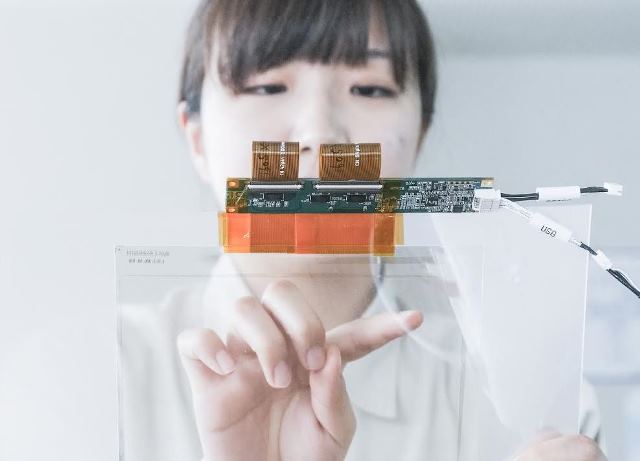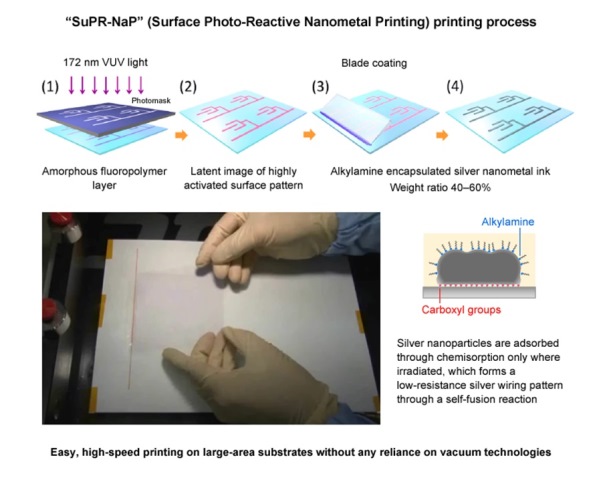At SEMICON West in July, Tanaka Kikinzoku Kogyo K.K. (http://gold.tanaka.co.jp/english/) announced a collaboration to commercialize a fabricated conductive polyethylene-terephthalate (PET) film for use in touch-panel sensors. The National Institute of Advanced Industrial Science and Technology (AIST, government) will work with the Japanese Ministry of Education, Culture, Sports, Science and Technology (academia). The resulting technology is expected to increase the number of applications: Because it can also be applied to small, highly flexible panels (not just large or medium-sized ones), it will suit many wearable products.

The film is manufactured from a transparent flexible PET substrate printed with silver nanoparticle ink to form ultrafine wiring 0.8 micron wide. The keys to this new technology are the manufacturing process and the nanometal ink.
The manufacturing process, called “SuPR-NaP” (Surface Photo-Reactive Nanometal Printing), can be used at normal temperatures and atmospheric pressures without the etching equipment needed for indium tin oxide (ITO) or metal film. It begins with a PET film being coated with an amorphous fluoropolymer layer (see figure below ). The fluoropolymer layer is then irradiated to modify the surface and produce a highly activated surface. A mask like those used in photolithography is applied to the surface; where light passes though, ink will adhere to form fine wires. An excimer lamp filled with xenon gas is used to produce the 172-nm ultraviolet light required to modify the surface of the polymer layer. Once irradiated and with the mask removed, the substrate retains a latent image of a highly activated surface pattern. A squeegee, or blade, is then used to coat the surface with ink containing silver nanoparticles dissolved in organic solvents, so that the ink adheres only to the patterned area.

The key to the success of this technique is getting the ink to attach to the activated surface only. The ink’s 10–15-nm-diameter silver nanoparticles have a protective coating; material with alkylamine groups, which have a weak bond with silver, was used for the coating. During manufacturing, carboxyl groups are formed in the activated polymer layer on the substrate’s surface. When the ink’s silver particles are exposed to the carboxyl groups, the amine groups peel off and the silver nanoparticles adhere to the carboxyl groups. Heat treating at 80°C or lower separates the amine groups and the wiring resistance drops to about one-tenth of its value before heating. Tanaka will distribute samples in January 2017.
Advertisement
Learn more about Electronic Products Magazine





